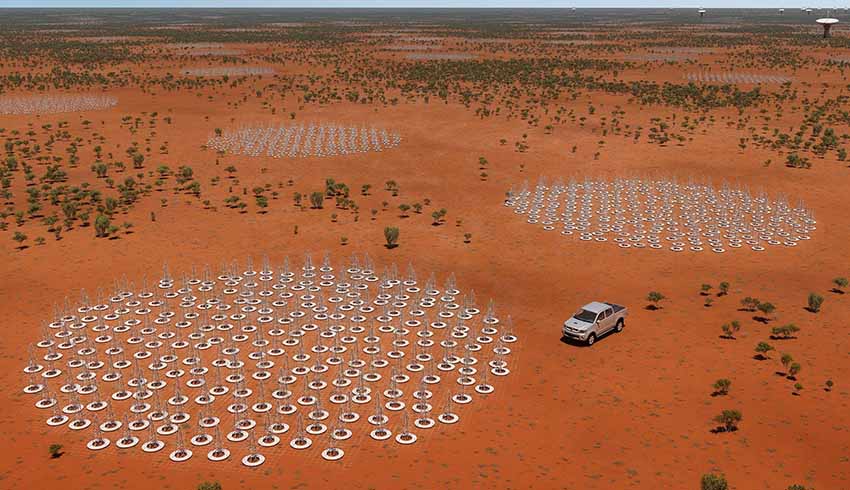
The SKA Infrastructure Australia Consortium, led by CSIRO and industry partner Aurecon Australia, has designed everything from supercomputing facilities, buildings, site monitoring and roads, to the power and data fibre distribution that will be needed to host the instrument at CSIRO's Murchison Radio-astronomy Observatory in remote Western Australia.
The SKA will explore the universe in unprecedented detail, doing so hundreds of times faster than any current facility, antennas will be located in both Australia and South Africa.
CSIRO and Aurecon engineers drew on their experience working together on the infrastructure design for the Australian SKA Pathfinder telescope, CSIRO's 36-dish radio telescope that is already operating at the Murchison Radio-astronomy Observatory.
Aurecon's senior project engineer, Shandip Abeywickrema, said the design team's biggest challenge was minimising radio 'noise' created by the systems placed at the high-tech astronomy observatory.
"We're setting the groundwork to host 132,000 low-frequency SKA antennas in Australia. These will receive staggering amounts of data," CSIRO SKA Infrastructure Consortium director Antony Schinckel said.
Australian SKA director David Luchetti said that while the CSIRO-Aurecon team had been working on the infrastructure designs for Australia, a second consortium had designed the infrastructure for the South African SKA site.
"CSIRO and Aurecon have delivered world-class designs, and the collaboration between the Australian and South African infrastructure consortia is a great example of the massive global effort behind the SKA project," Luchetti said.
This design work was funded by the Australian government and the European Union. The Infrastructure Australia group, and counterparts designing SKA infrastructure in co-host country South Africa, are among 12 international engineering consortia each designing specific elements of the SKA.
These consortia represent 500 engineers and scientists in 20 countries. Once all the design packages are complete and approved, a critical design review for the entire SKA system will take place ahead of a construction proposal being developed. Construction on the SKA is expected to begin in 2020.
Receive the latest developments and updates on Australia’s space industry direct to your inbox. Subscribe today to Space Connect here.









